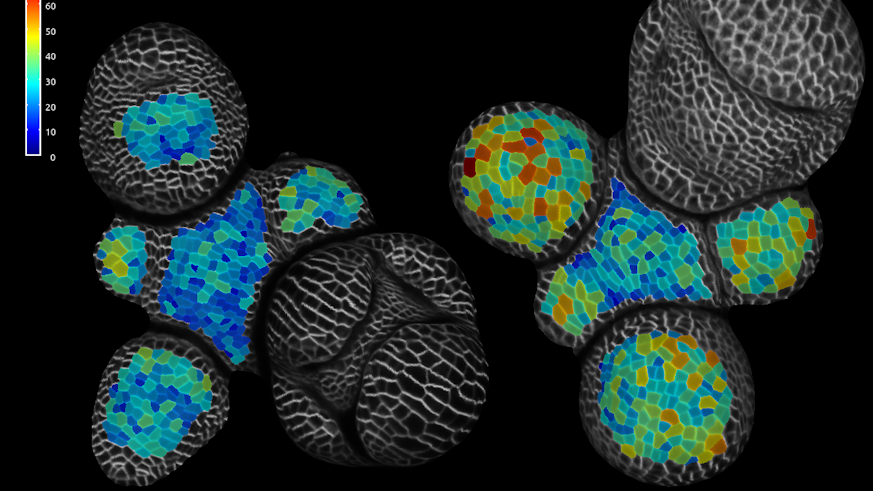What makes plants grow?
11 Mai 2017

Research carried out by scientists at Cardiff University School of Biosciences has provided new insight into the factors controlling cell growth in plants.
Cells are the building blocks of larger organisms, such as plants and animals. The size of cells is strictly controlled, and to maintain a steady size there needs to be a balance between how big cells grow and how quickly they divide.
However, little is currently understood about how this process works. Previously, it has been suggested that when cells get to a specific size they will always divide, thus preventing individual cells from becoming too large. Professor Jim Murray, Dr Walter DeWitte and Dr Angharad Jones from Cardiff University, along with partners from the École Normale Supérieure de Lyon and the Max Planck Institute for Plant Breeding Research in Cologne, set out to test this hypothesis and investigate whether there are additional factors affecting the growth and division of plant cells.
Using the plant species Arabidopsis as a model, the research team investigated the balance of cell growth and cell division in a special group of cells found at the apex of the plant shoot. By taking 3D time-lapse images of the plant shoots growing, they were able to track each individual cell within the plant structure and measure how long it took to divide, and at what size it divided. They then used a computer simulation to test out different theories and work out the rules of division.
The results of the research were unexpected. Lead author of the study, Professor Jim Murray, explained,

“We were surprised to discover that there is not a strict size at which cells divide. Instead, we found that cell division depends on a number of factors, including the plant’s stage of development, the growth environment, and the genotype of the plant. This indicates that cell size in plants is controlled in a similar way to single-celled organisms such as yeast.”
He continued,
“We also found that a high rate of cell division doesn’t necessarily result in high growth. There can often be ‘trade-offs’, whereby we end up with a lot of cells, but of a very small size, so the overall size of the plant hasn’t actually increased.”
Research Associate, Dr Angharad Jones, explained the potential significance of this research,

“Plants play a significant role in our daily lives, from providing us with food, to being used in building materials and other chemical products. By better understanding the growth process of plants, we can better predict how they grow under different conditions, and this knowledge could potentially be used to improve the growth and yield of plant crops.”
The research paper, Cell-size dependent progression of the cell cycle creates homeostasis and flexibility in cell size, is published in Nature Communications journal.